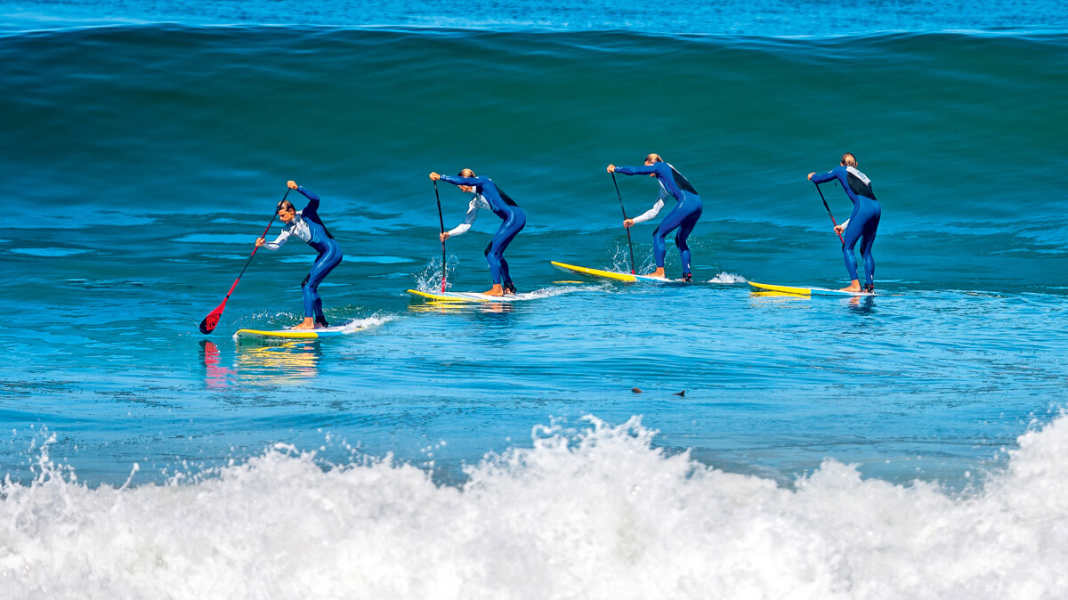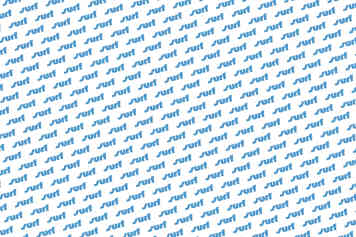

CATCHING THE WAVE - WITH THE SHORTBOARD (photo above)
With a smaller board (shortboard), you don't necessarily have your surf box in the bow position facing the beach, but turn it towards the beach like on a plate when the wave rolls in. This requires board control and a lot of practice, even in flat water. This allows you to react quickly and catch every wave. This is how it works: When a suitable wave rolls in, immediately go into surf stance, put pressure on the tail and turn about 90 degrees using the paddle stroke on the outside. Then paddle in the surf stance as in the riding technique and pull hard on the bar to catch the wave.
WAVE RIDING - FRONTSIDE

The board picks up speed, you glide into the wave trough and surf. The feeling is unique and, depending on the size of the wave, happiness hormones are released that you can never get enough of. By loading the edges, turning your body and actively using the paddle, you can enjoy one turn after another into the wall of water. The take-off is mastered. Depending on how the wave breaks and which foot you have in front (right in front - goofy - or left in front - regular), you can surf a frontside turn or a backside turn. Frontside means surfing with your stomach to the wave and working more with the pressure of your toes. With a backside turn, it's the other way round: you surf with your back to the wave and put more pressure on your heels. As frontside surfing is easier, beginners should also celebrate their first turns frontside.
After the take-off, you put weight on your toes and turn with feeling into the so-called bottom turn in the wave trough. The paddle is held frontside, i.e. inside, in the water for support (balance and steering). This is how you steer towards the edge of the wave. Before the crest of the wave, you shift your weight onto your heels and turn a so-called cutback. The paddle can be used to support you at the crest, looking into the trough of the wave. If the wave allows it, you follow one bottom turn and cutback after the other until it collapses close-out.
